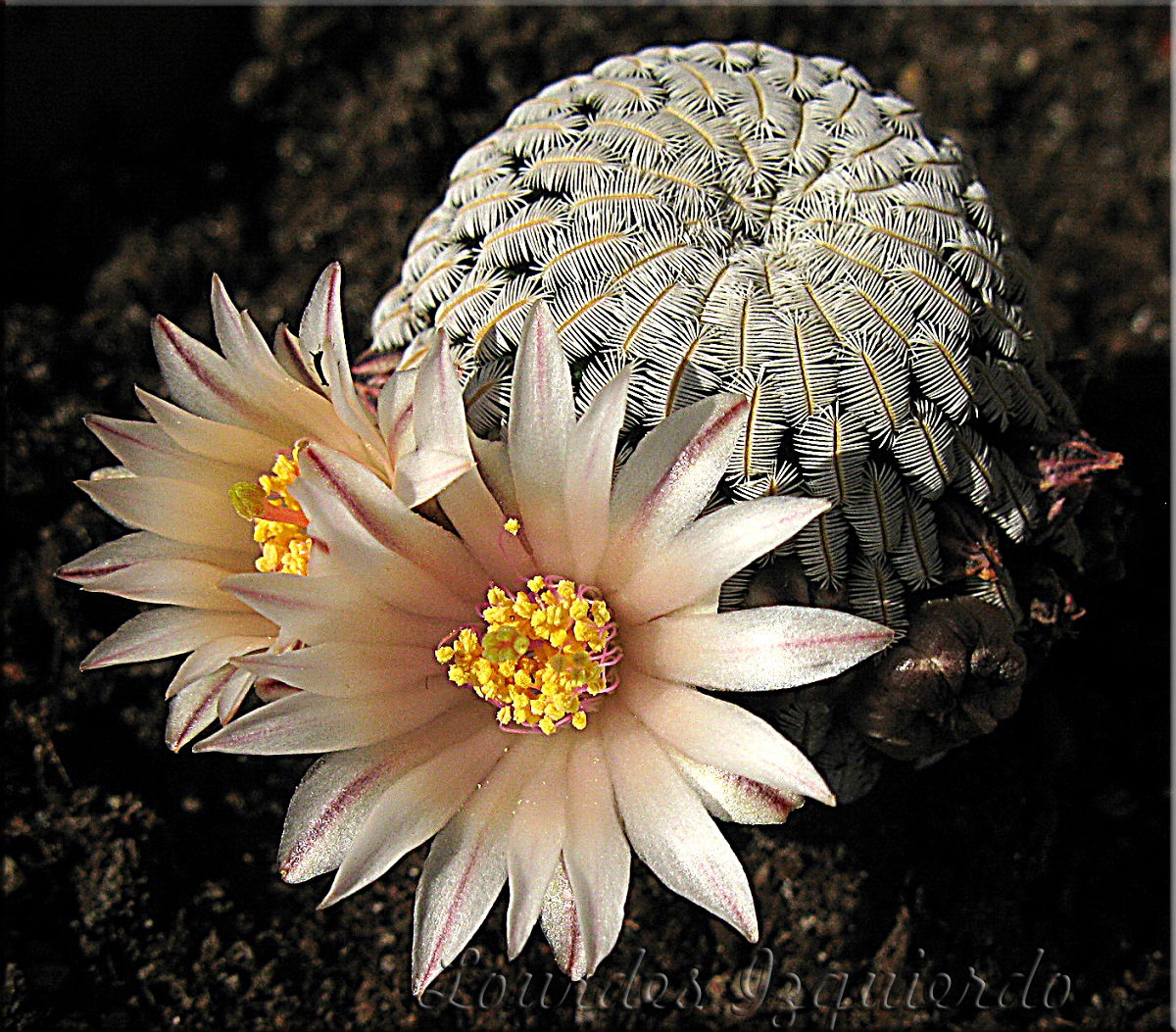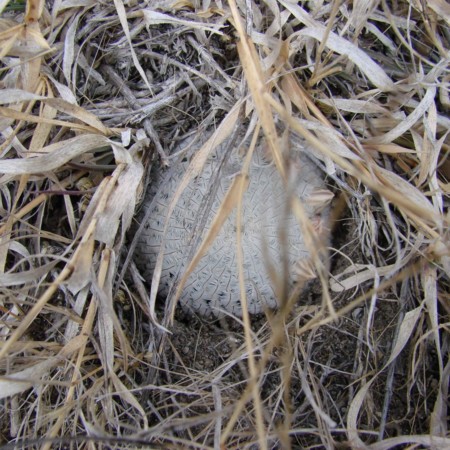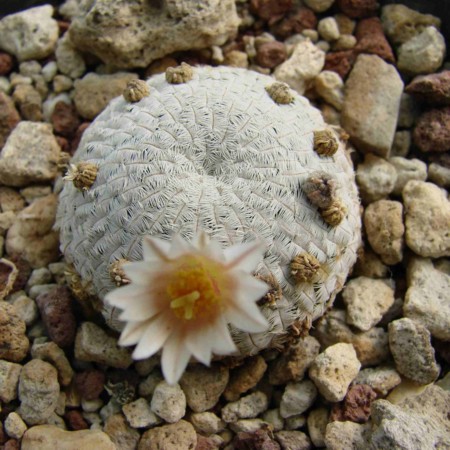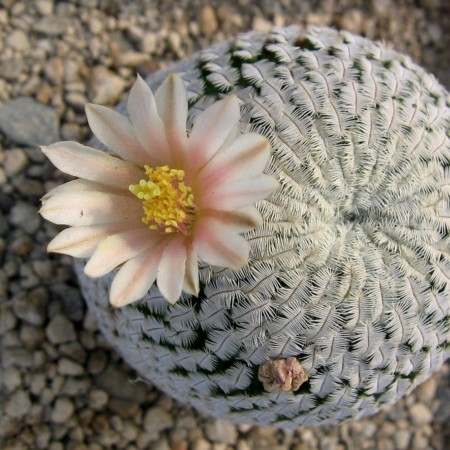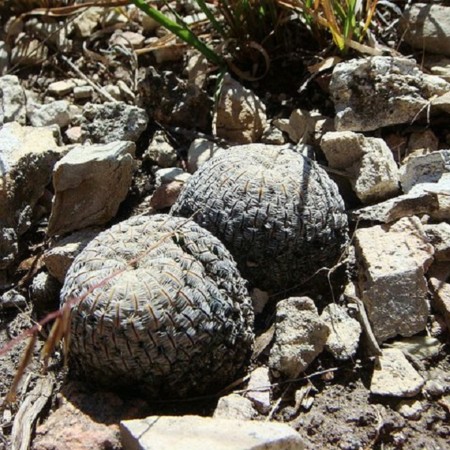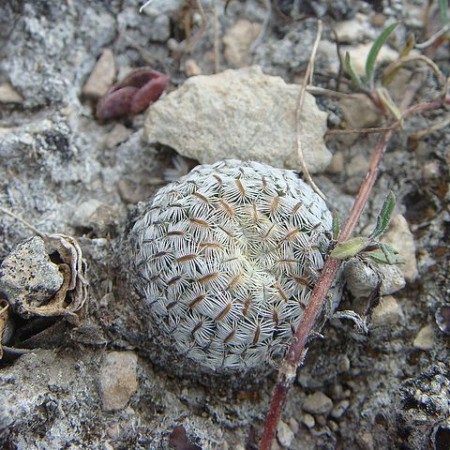(Photograph = Mammillaria pectinifera, Lourdes)
Introduction
Some plants release their seeds as they ripen. Fruits may open at different time or animals may eat ripe fruits and return later as more fruits ripen. Other plants release their seeds in response to certain triggers; the most studied of which is fire. Some conifers hold their cones for many years with seeds within only to release them precisely after a fire. This type of delayed or triggered seed dispersal is called serotiny.
The Details
Mammillaria pectinifera is a rare and threatened cactus that grows in Puebla, Mexico. It is important to understand how the cactus reproduces in order that it can be protected. M. pectinifera retains its fruits in some cases but discards it in other; it was studied to see what causes the fruits to be retained or dispersed. Plants were studied in the field over two years, but some plants were transplanted to greenhouses for certain studies.
The first year of the study was unusually dry, but the second year of the study was relatively wet. Two modes of seed expulsion were observed. First, some fruits were retained on the plants in dry conditions and seeds were shed from these fruits slowly over time. Second, during wet periods, whole fruits were expelled from the plants and the seeds were shed as the whole fruits were shed.
Thus, one method of seed dispersal does not need a trigger–seeds are gradually dispersed over time. But, the whole fruit dispersal method required above-normal wet conditions (a rainfall trigger). Dispersal of whole fruits (and thus more seeds) during wet conditions allowed the plants to take advantage of wet conditions that might favor seedling establishment.
The plant “reads” the environmental conditions and preferentially sheds seeds to take advantage of rain triggers.
Additional Reading: Seed Retention and Release in Mammillaria pectinifera
